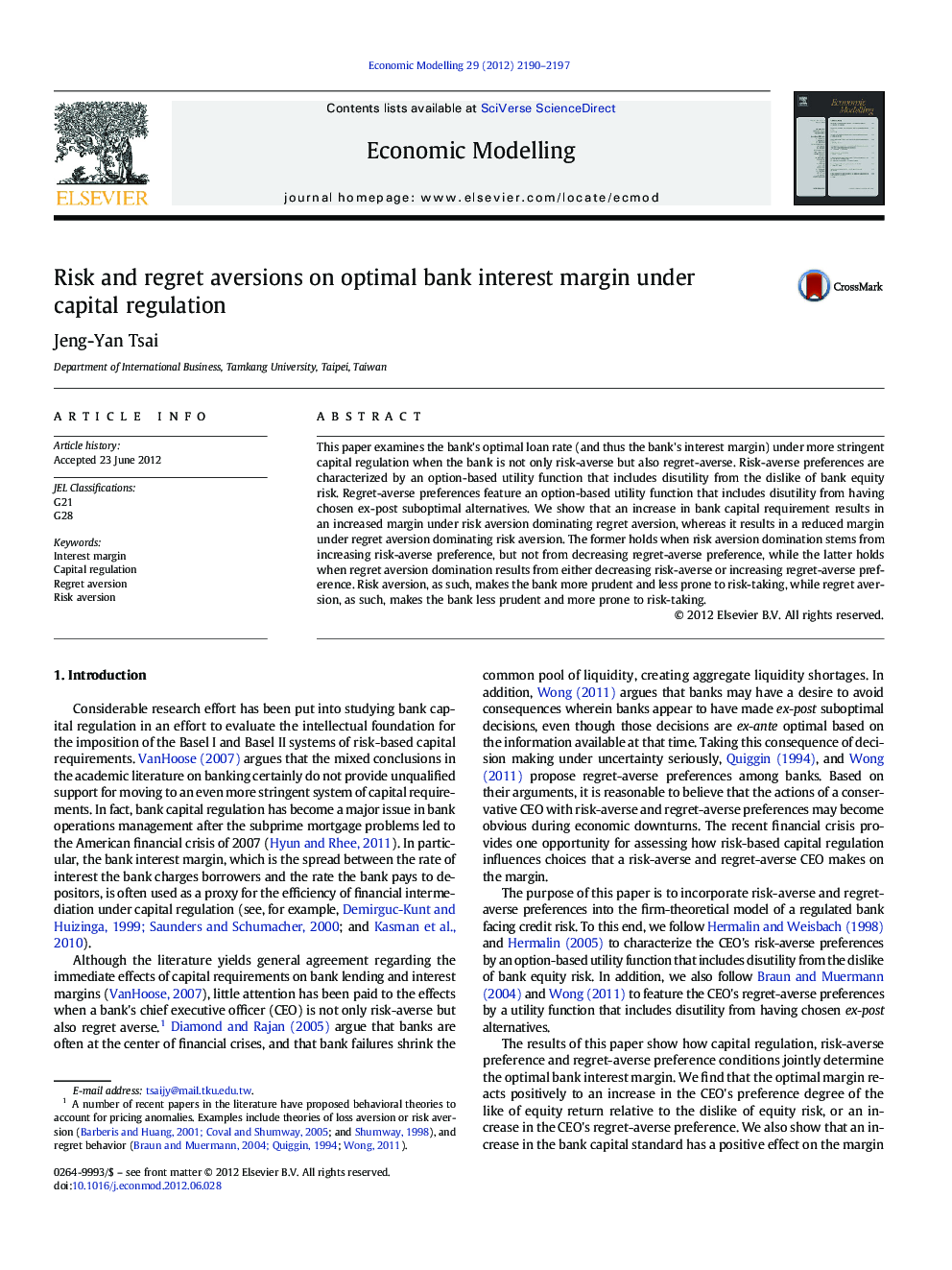| Article ID | Journal | Published Year | Pages | File Type |
|---|---|---|---|---|
| 5055072 | Economic Modelling | 2012 | 8 Pages |
This paper examines the bank's optimal loan rate (and thus the bank's interest margin) under more stringent capital regulation when the bank is not only risk-averse but also regret-averse. Risk-averse preferences are characterized by an option-based utility function that includes disutility from the dislike of bank equity risk. Regret-averse preferences feature an option-based utility function that includes disutility from having chosen ex-post suboptimal alternatives. We show that an increase in bank capital requirement results in an increased margin under risk aversion dominating regret aversion, whereas it results in a reduced margin under regret aversion dominating risk aversion. The former holds when risk aversion domination stems from increasing risk-averse preference, but not from decreasing regret-averse preference, while the latter holds when regret aversion domination results from either decreasing risk-averse or increasing regret-averse preference. Risk aversion, as such, makes the bank more prudent and less prone to risk-taking, while regret aversion, as such, makes the bank less prudent and more prone to risk-taking.
⺠We examine the bank's optimal interest margin under capital regulation. ⺠The bank chief executive officer is risk-averse and regret-averse. ⺠More capital standards increase the margin under risk dominating regret aversion. ⺠It holds when the domination is from increasing risk aversion. ⺠More capital standards decrease the margin under regret dominating risk aversion.
